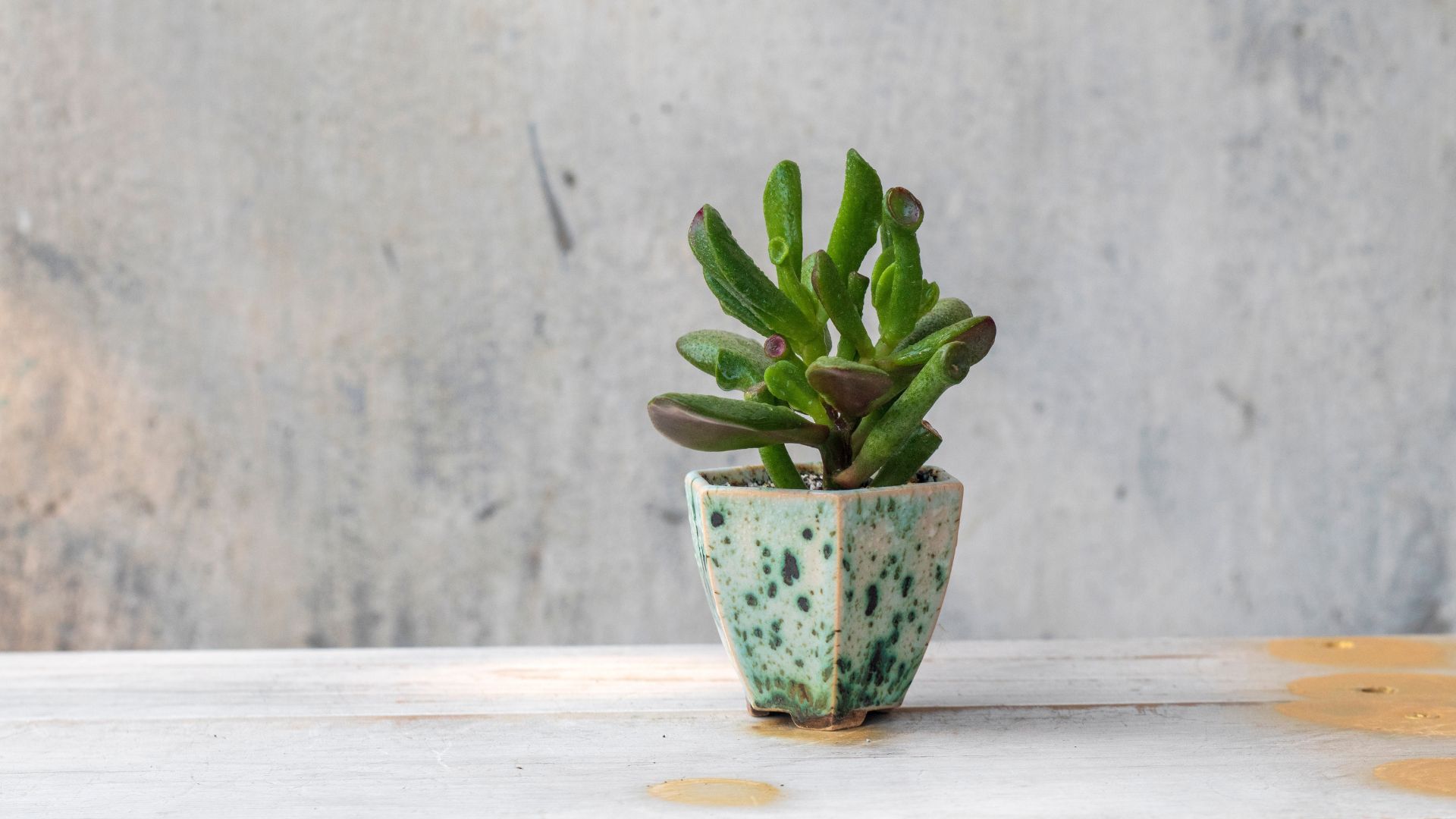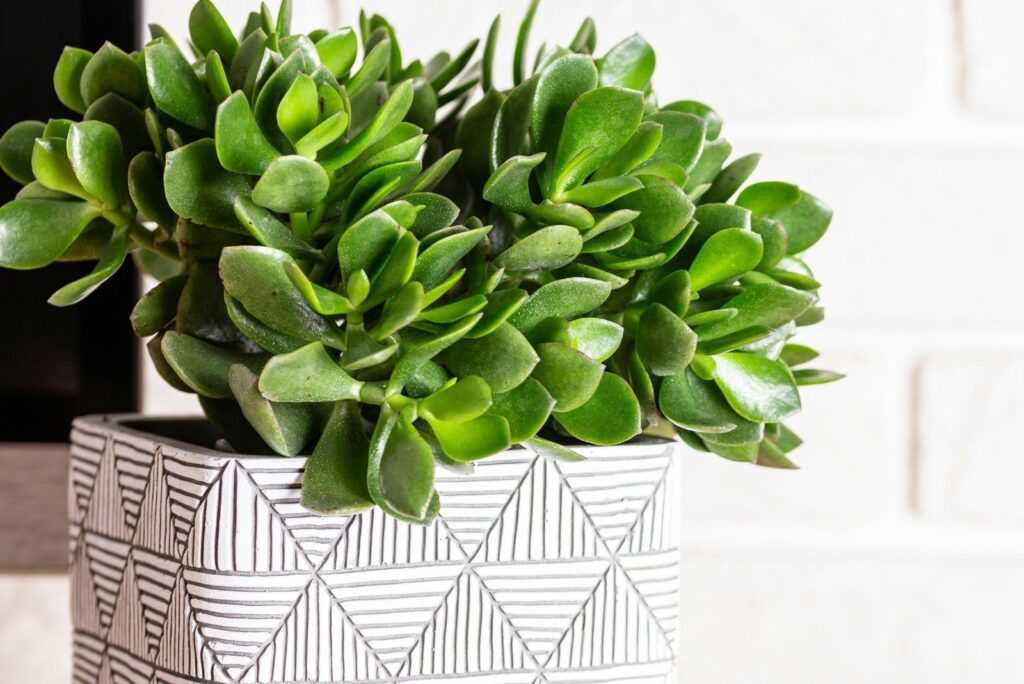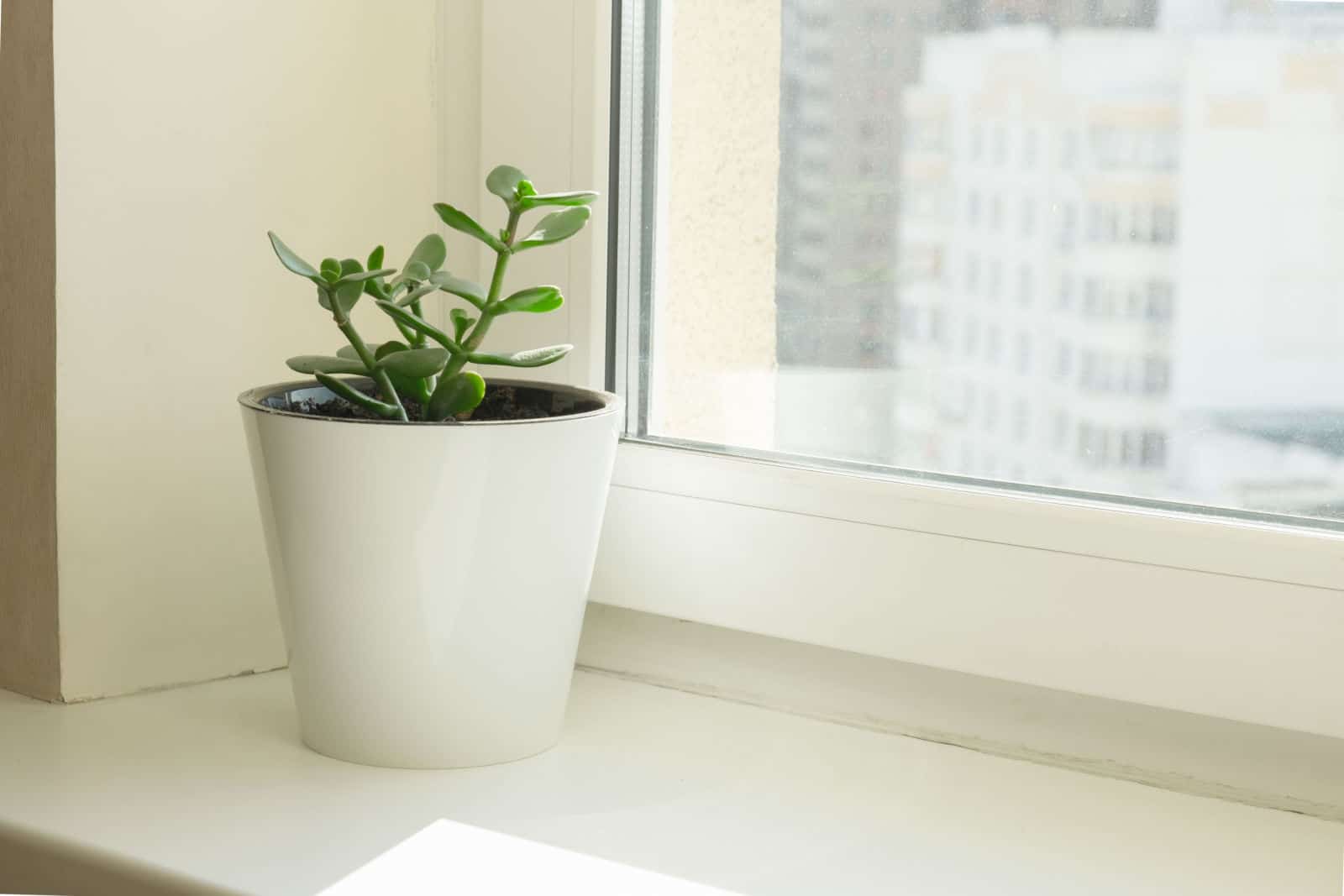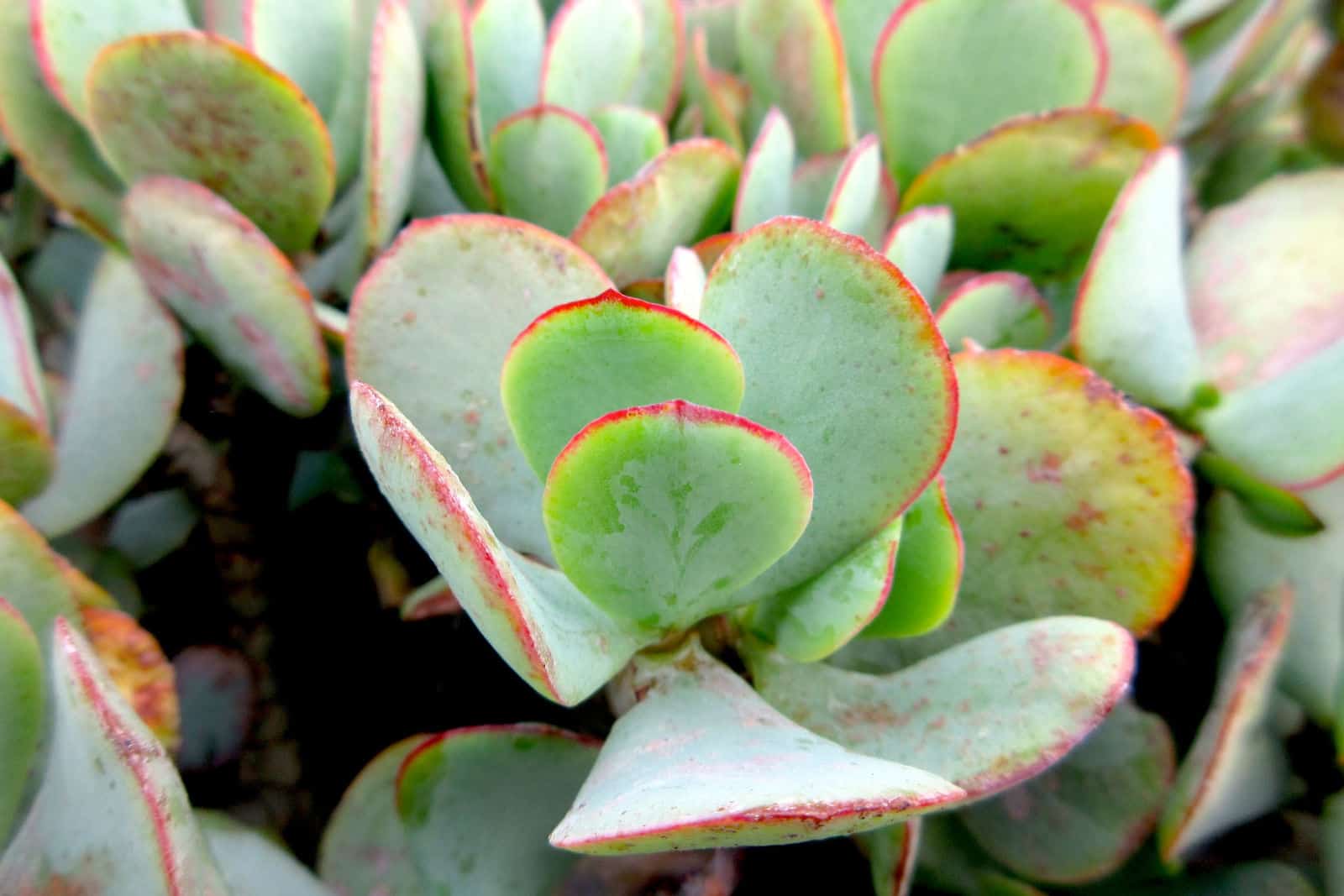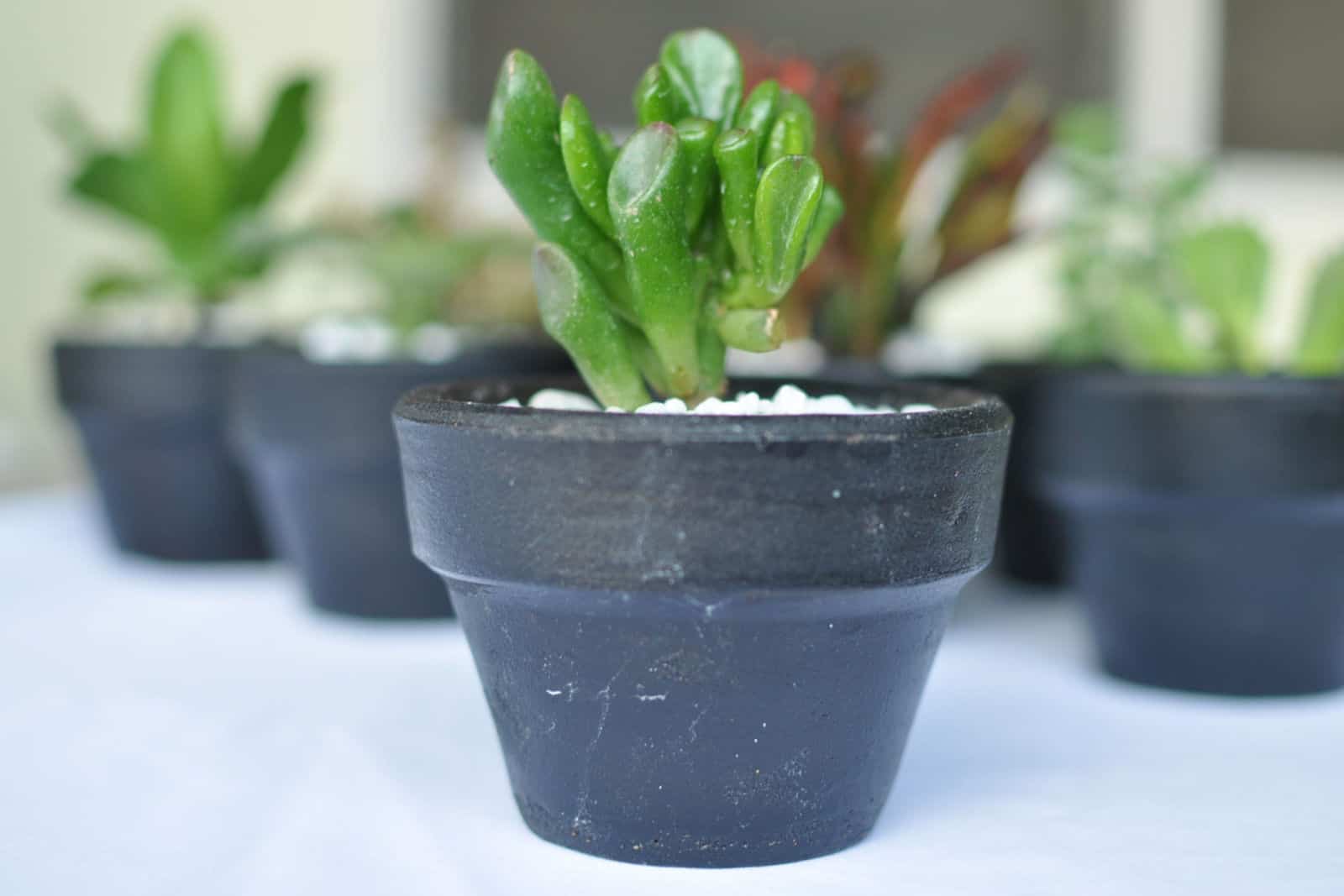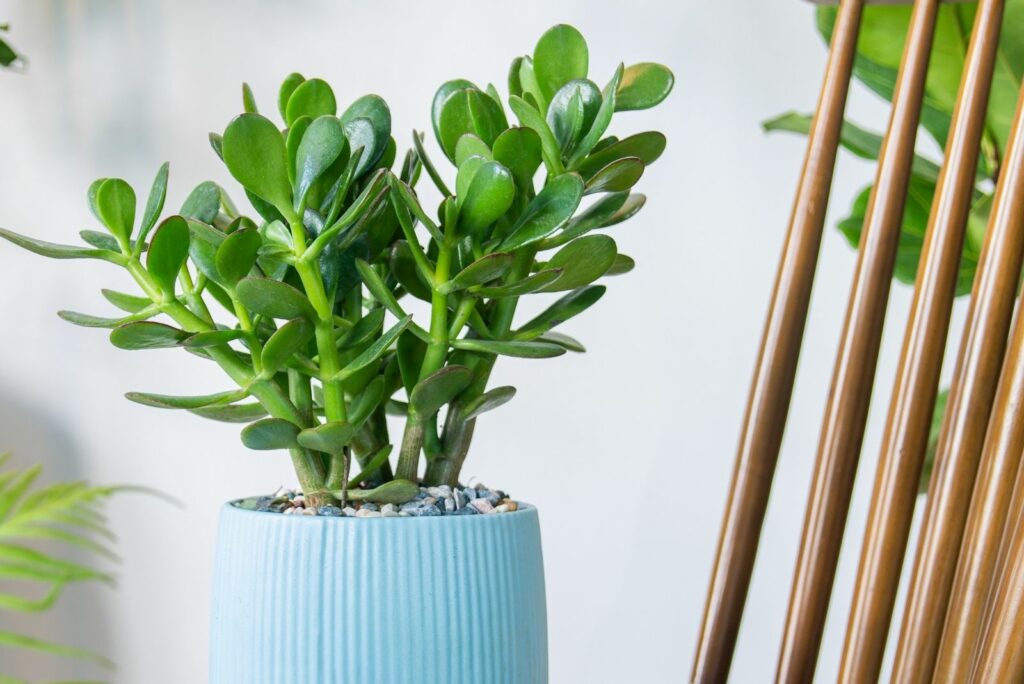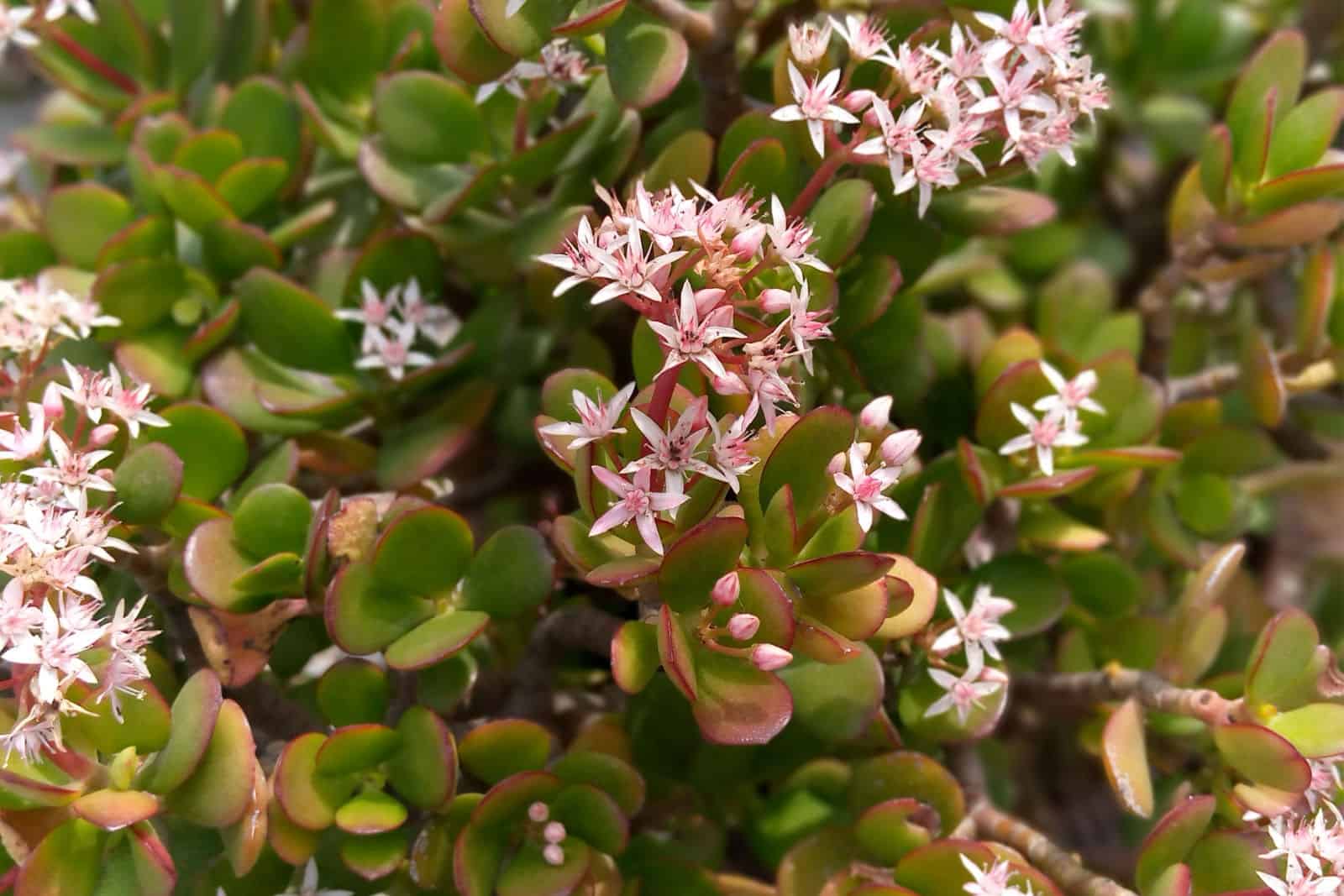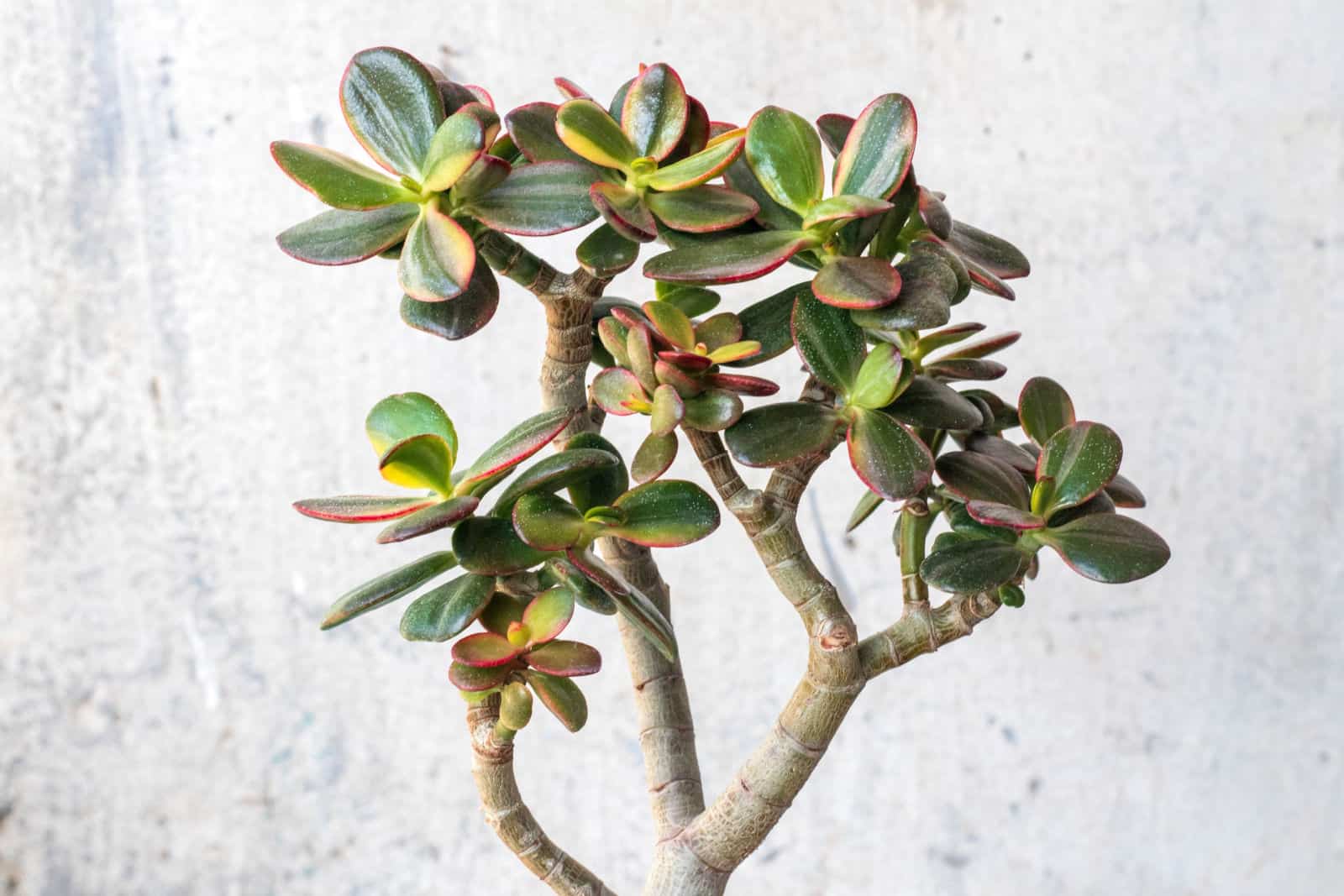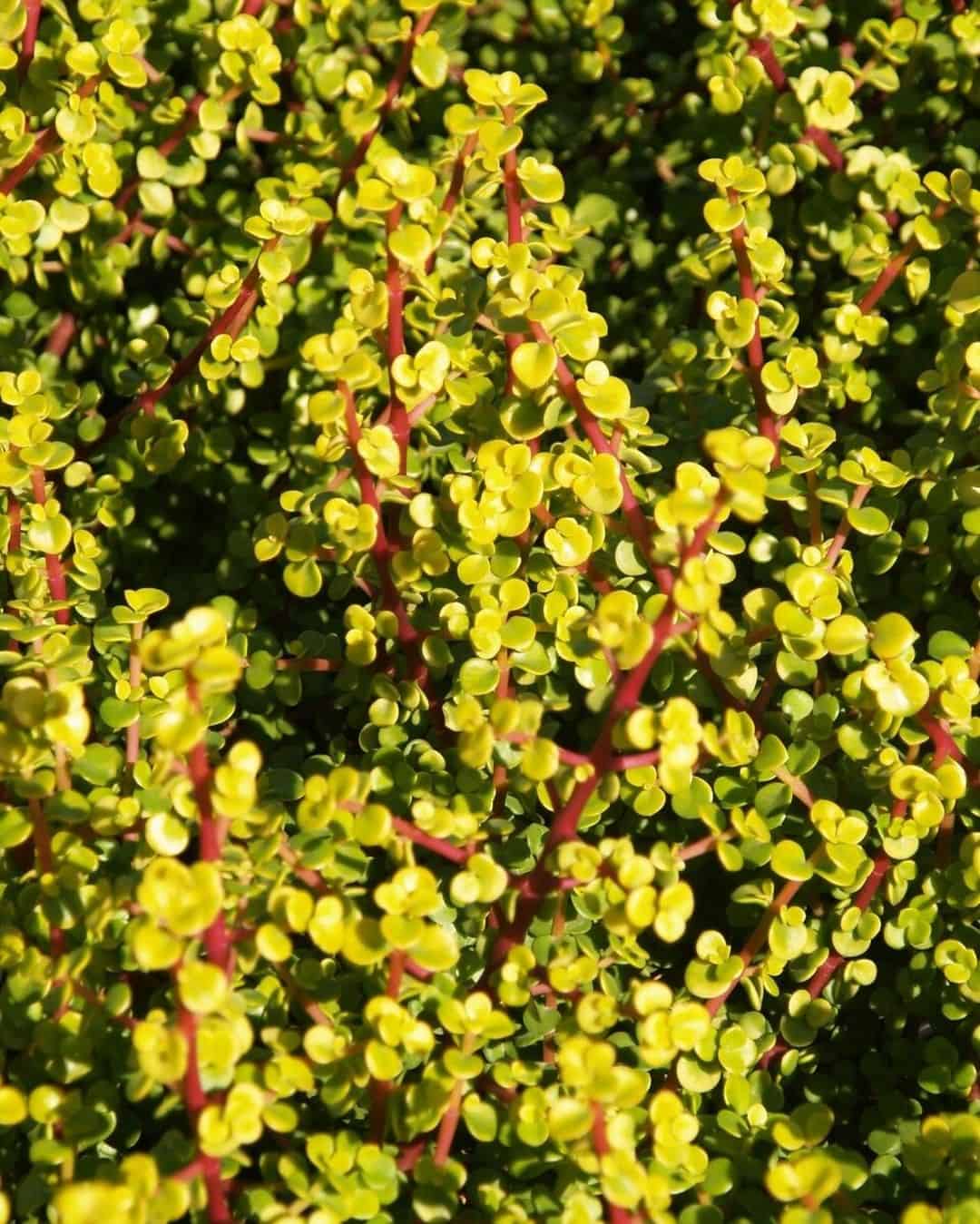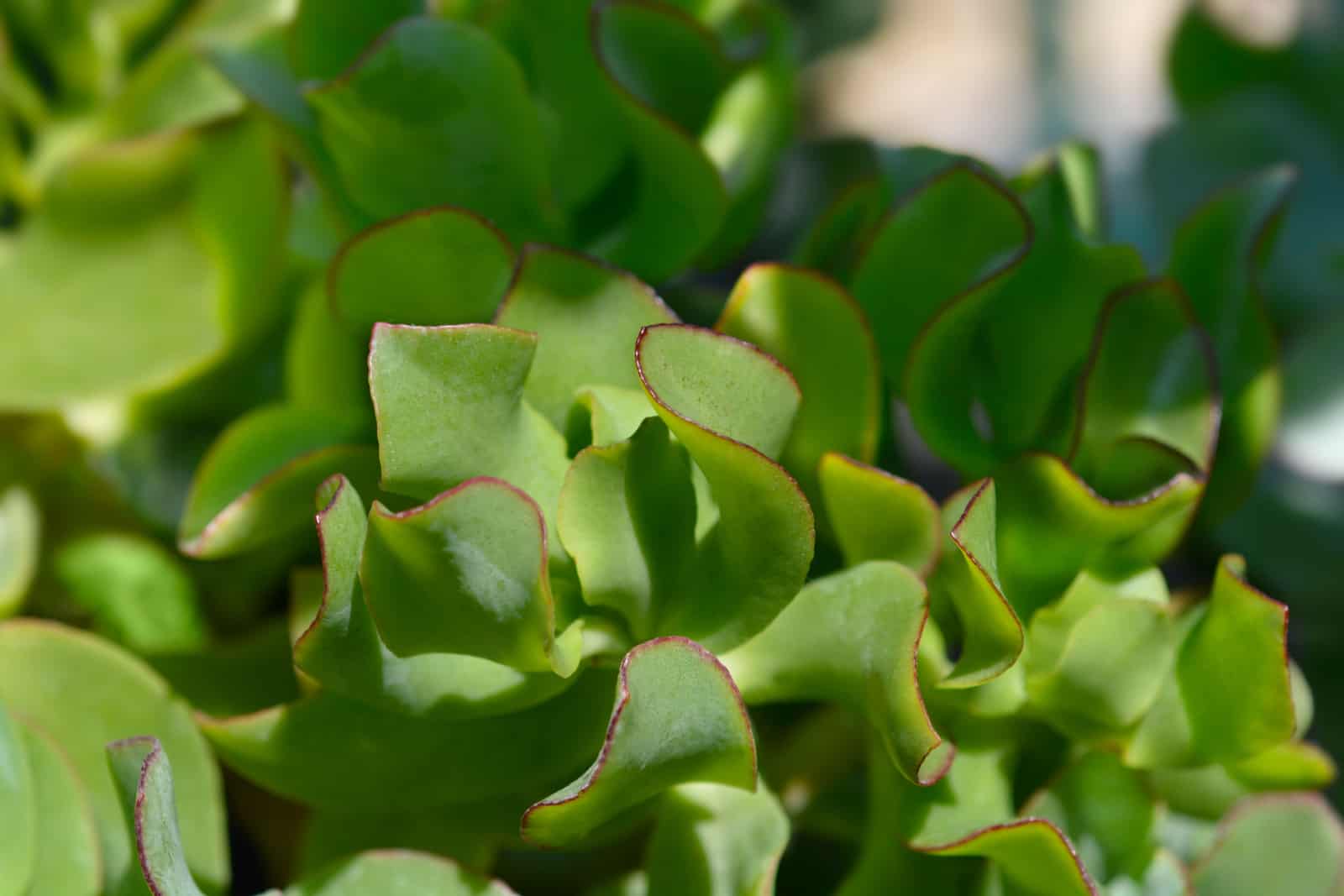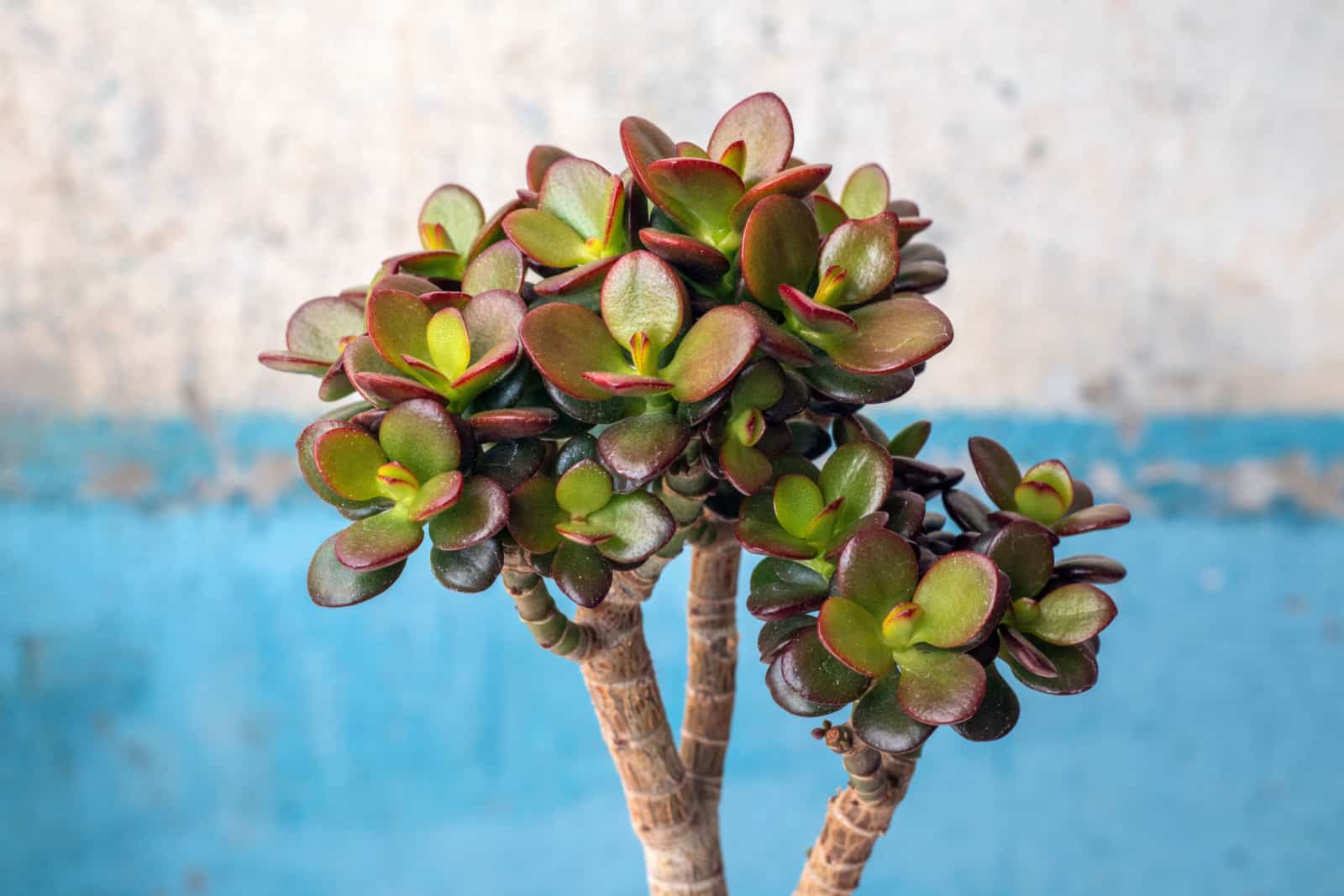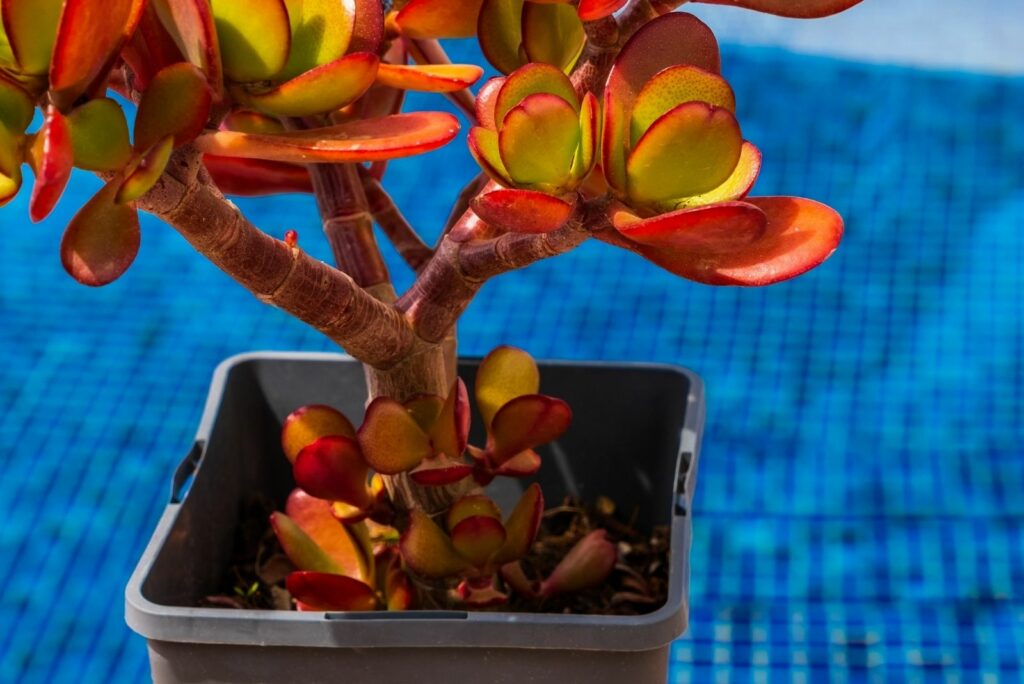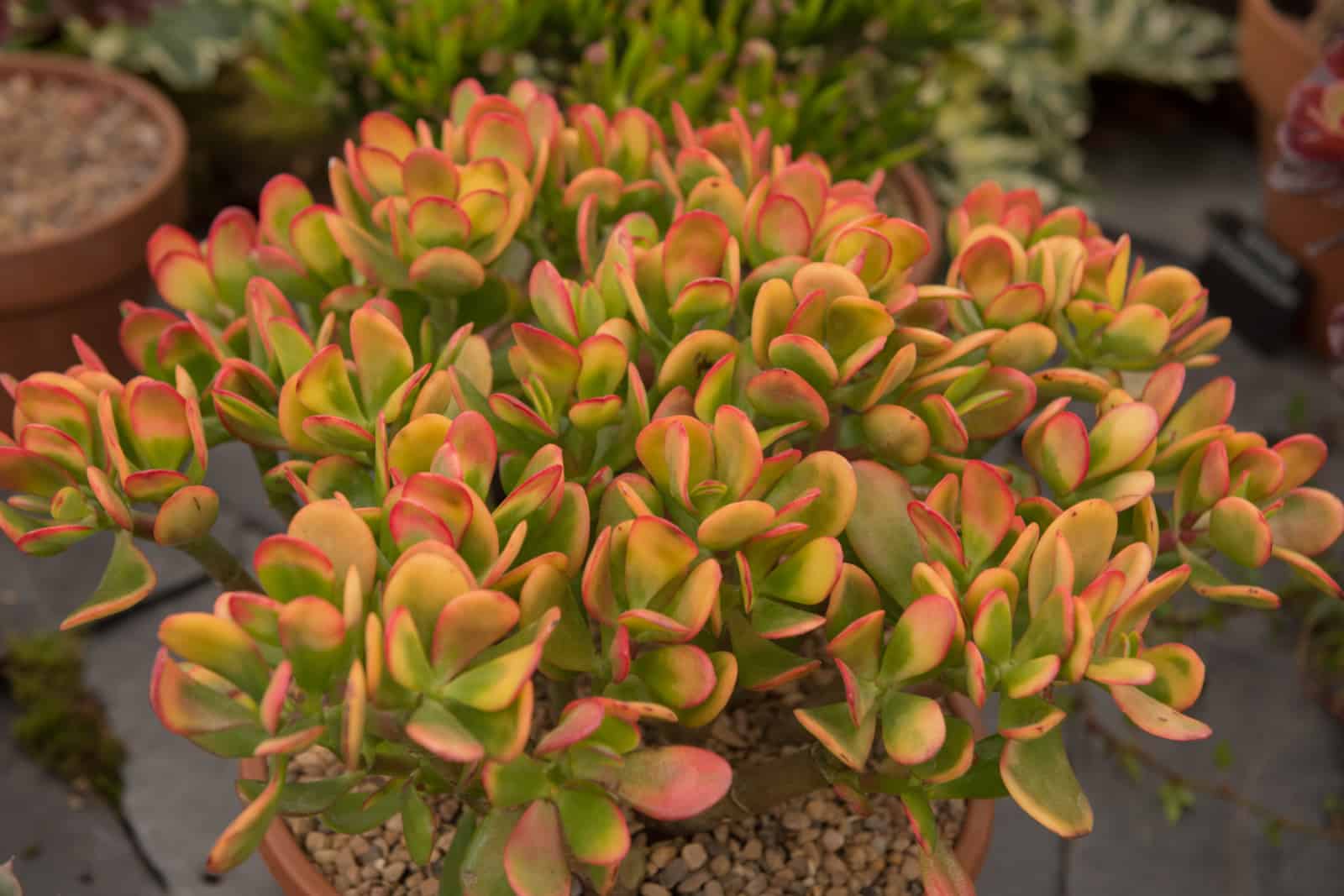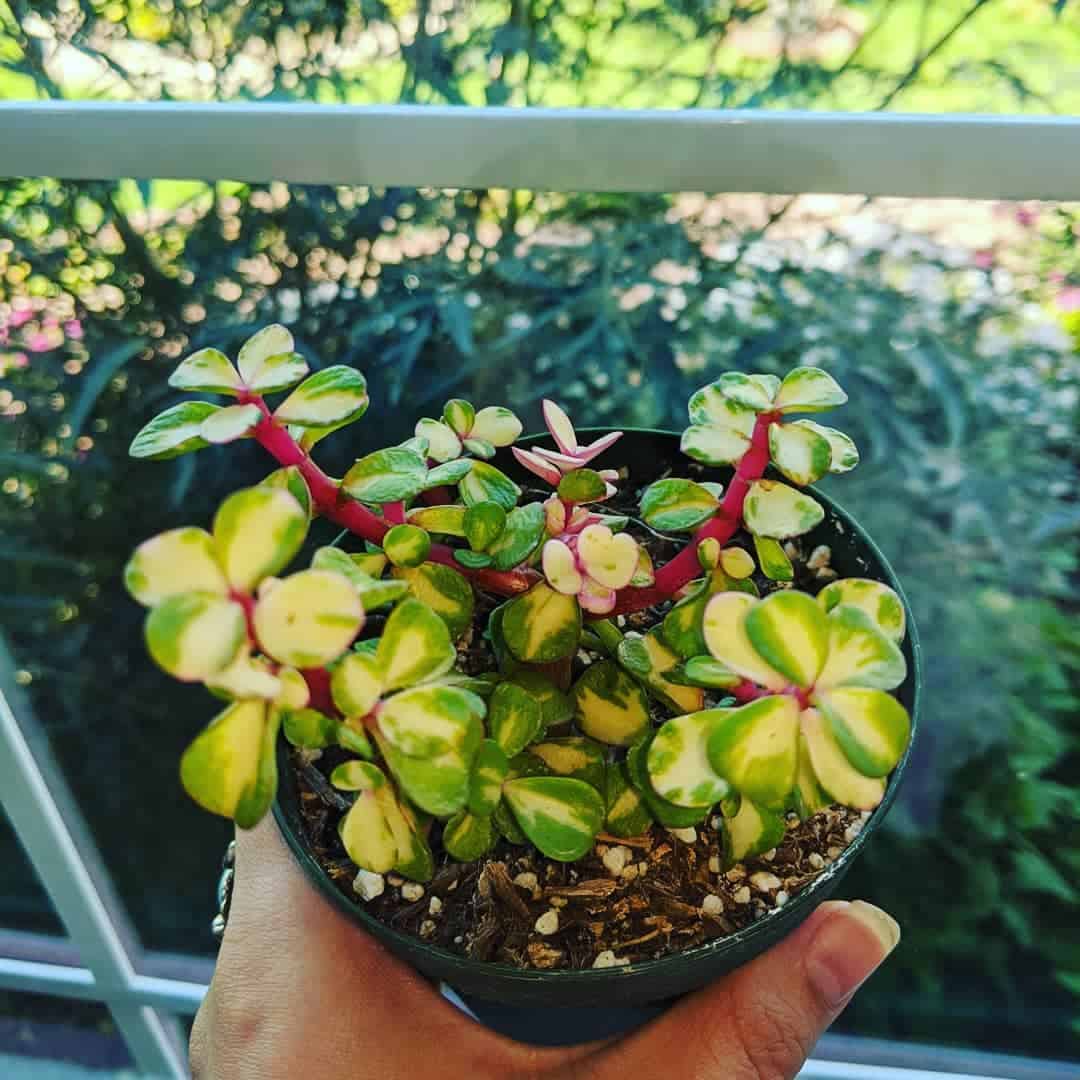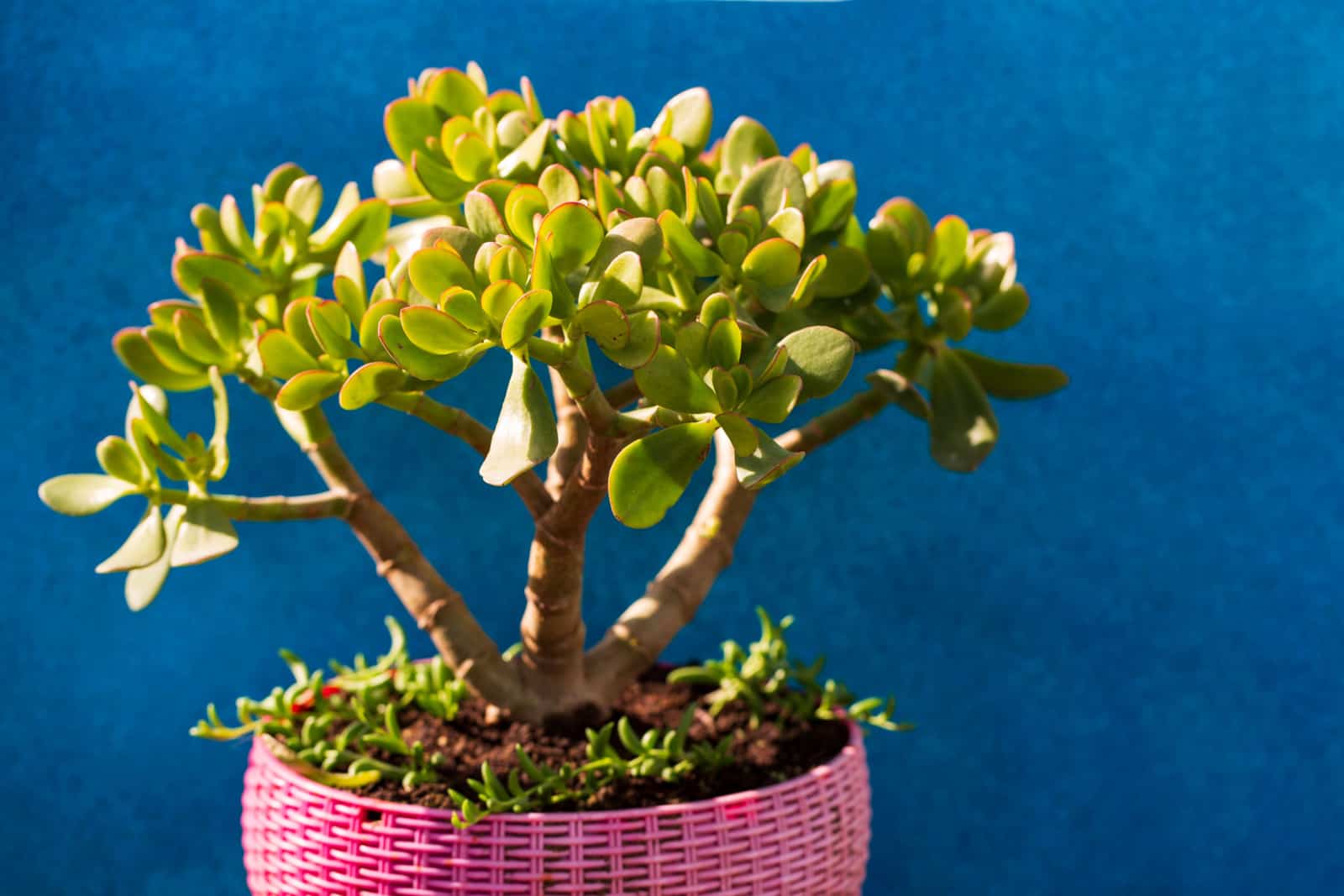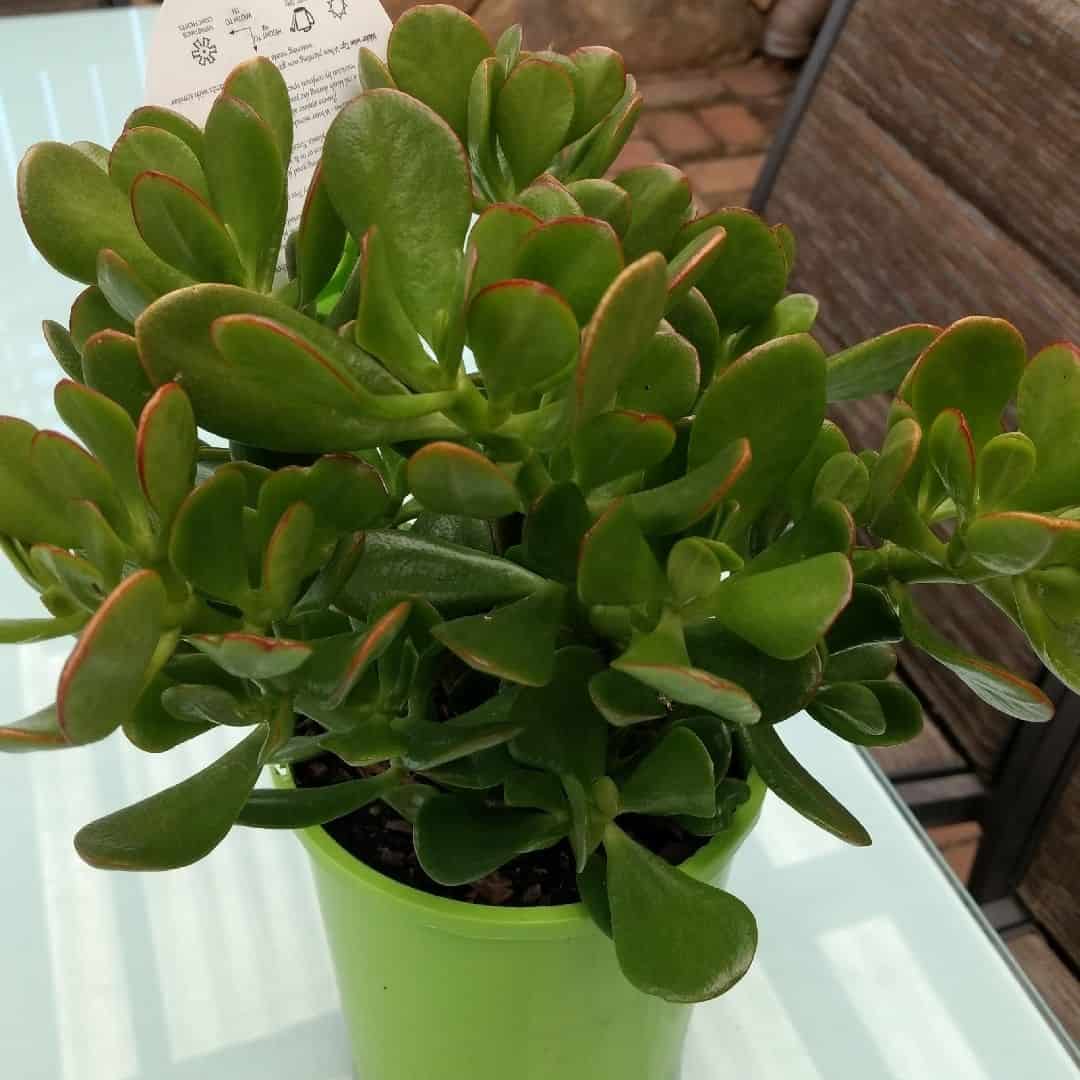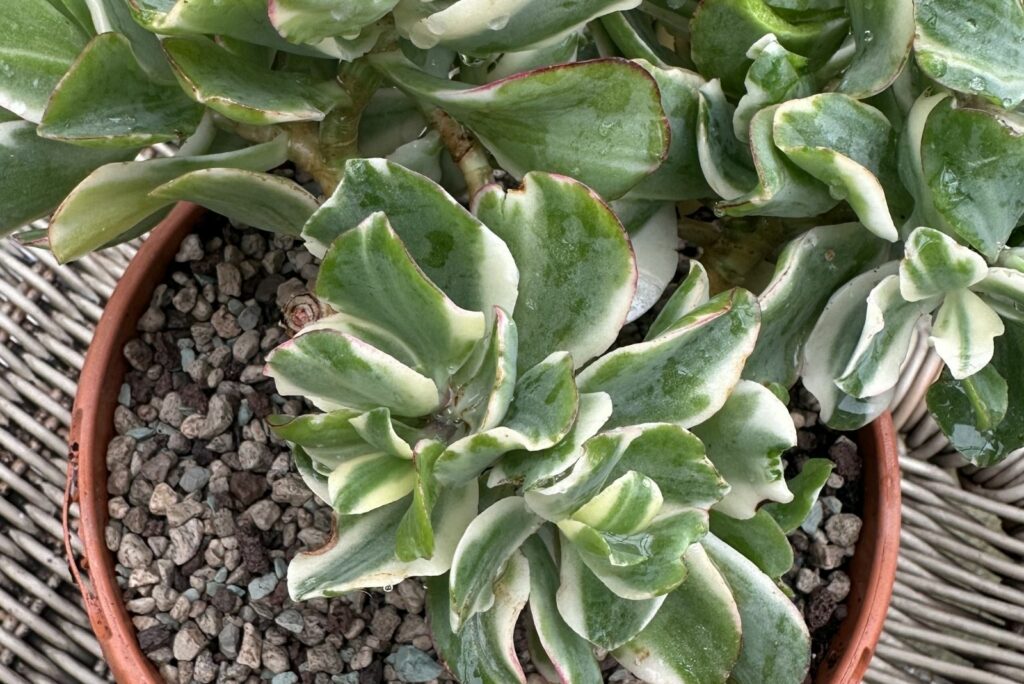Jade plants are one of the prettiest and easiest plants that you can grow indoors. These little succulent plants have fleshy leaves that usually grow in unique patterns, and they can be cultivated outdoors as well.
Different types of jade plants belong to the Crassula genus, which contains around 200 varieties. Among the 200 different jade plants, I’m sure that you will find one that suits your style!
Today we are going to describe some gorgeous types of jade plants that are very easy to grow, so make sure to keep reading!
15 Types Of Jade Plants
As well as their aesthetics, there are different reasons to grow jade plants indoors. Some of the biggest jade plant benefits include improving air quality, attracting good luck, medicinal properties, and increasing indoor humidity.
Let’s take a closer look at some different types of jade plants.
1. Miniature Jade
The Miniature jade, otherwise known as the Crassula ovata Minima, is a small variety of Jade plant that can grow up to 23 inches in height. It is a compact plant that produces leaves that grow in clusters and imitate a bushy appearance in a small pot.
The leaves are green and fleshy with just a hint of red on the edges. You will also be able to see numerous small and pink flowers over autumn and winter that make the plant even more enticing!
The Miniature jade thrives in full sun and partial shade, and requires well-draining soil with just a bit of plant food and water occasionally since they are succulent plants that can tolerate drought.
2. Crassula Arborescens
Also known as the Silver jade plant, the Crassula arborescens is one of the most popular varieties. Beautiful bluish and grayish green leaves with pink edges can be seen on the Silver jade.
It has elliptical, fleshy leaves with little maroon specks on the topside. The plant is a slow grower and it reaches a maximum of 4 feet tall and wide. In ideal conditions, the plant will start blooming – it produces star-shaped flowers that can be pink or white.
The plant care requirements are similar as described above: they need full sun to partial shade, some water, and proper drainage in order to grow and thrive.
3. Ogre Ear Succulent
The Crassula ovata Gollum is also known as the Ogre ear succulent, Shrek’s ears, ET’s fingers, Finger plant, and Trumpet jade plant. You might be wondering why this plant has so many nicknames!
Well, it is because this plant has tubular, elongated leaves. They feature an oddly shaped end that has a suction cup-like appearance. Green leaves with red tips are characteristic for this jade variety as well.
It also has pink or white, star-shaped flowers that bloom quite rarely. When grown indoors, the Gollum jade can reach heights of 23 inches and widths of 30 inches. Even when neglected, this small succulent thrives well.
The plant thrives in USDA hardiness zones 10 to 11 and it requires full sun to grow. However, it can also tolerate growing in partial shade. It needs to be watered moderately. What’s also interesting is that it takes about 3 years for this plant to reach full maturity.
4. Botany Bay
This is a new variety that was annotated in 2011. The Crassula ovata Botany bay produces flat and fleshy green leaves that have thin red margins on the leaves. It has a bushy appearance since the leaves grow quite densely. This is why it is one of the favorites of plant lovers!
This plant is also referred to as the Friendship plant, so it is a great gift for your close friends.
It can grow up to 3 feet tall but its growth is limited in restricted areas. This new plant requires direct sunlight. You can use a succulent soil mix for this plant, and you won’t have to worry about watering as much since they are relatively drought tolerant.
5. Pink Jade
Otherwise known as the Crassula ovata Pink beauty, this jade variety is known for its beautiful star-shaped leaves that are pink and grow vigorously. These flowers cover the entire plant during the blooming season!
The plant also produces green, round–shaped leaves that are fleshy and thick. The flowers and foliage combine perfectly!
The Pink jade thrives in drier conditions, which is why they are often grown outdoors during the summertime. The plant can grow up to 3 feet tall, and due to its dense flowers and leaves, it makes a cute shrub that can fill out empty spaces in the garden.
The plant care is also similar to the abovementioned plants; just don’t overwater it otherwise you will end up with a flowerless jade!
6. Variegated Jade Plant
The Crassula ovata Variegata, or simply Variegated jade plant, produces variegated foliage, which is how they got their name. The leaves are green, but they are also covered with creamy-white variegations.
This variety doesn’t have a bushy appearance, and you can easily spot thick, woody brown stems. It also produces pink and white flowers.
Variegated jade plants can reach up to 4 feet tall and 3 feet wide in the ideal growing conditions. These plants are quite sensitive and you can often spot scales on jade plants. Be careful where you put this plant because it is toxic to cats and dogs.
7. Portulacaria Afra Aurea
This unique variety changes colors as they grow, hence the nickname “Yellow rainbow bush”, though this Portulacaria afra cultivar is sometimes also referred to as “Yellow Elephant’s food”. This is a low-growing trailing succulent that is often used as a ground cover.
It grows relatively slowly, which is why it is not a top choice for ground covers.
The Portulacaria afra Aurea has round-shaped leaves that change color from yellow to light green. The colors are affected by the plant’s growth, the type of water you use to irrigate it, fertilizer, and also the weather. Nonetheless, each color fits perfectly with reddish brown stems!
If you are lucky, you will be able to see lavender pink flowers.
This variety prefers growing in partial to full shade. I would suggest using homemade jade fertilizer for this jade plant. If grown properly, the plant can reach up to 3 feet tall.
8. Ripple Jade Plant
Here is yet another variety that is significantly different from the other jade species!
The Crassula arborescens undulatifolia, otherwise known as the Ripple jade plant, has unique waxy green leaves that grow tight and compact. This plant displays bonsai-like features.
This evergreen plant produces characteristic star-shaped flowers that can be white or pink. Ripple jade plants can reach up to 3 feet tall and will definitely make your space more cheery and lively.
When it comes to plant care, it is pretty similar to other jade plants – water them thoroughly every now and then, ensure that they get plenty of sunlight, and fertilize them during the growing season to boost ripple leaf production.
9. Variegated Bush
The Variegated bush, Rainbow bush, or Portulacaria afra Variegata is a type of plant similar to the Yellow rainbow bush. The difference is that this plant has green leaves that don’t change as much.
This is also a slow-growing plant with reddish to brown stems and green leaves covered with creamy-white variegations. This plant works as a bonsai, but it can also be grown as a hedge in frost free regions. The lovely leaves look absolutely dreamy in hanging baskets as well.
If the growth is not restricted, a Variegated bush can reach up to 12 feet tall with an equal spread. Still, regular pruning helps to control the plant’s size and shape. It can produce lavender pink flowers, though they are rarely seen.
It can tolerate temperatures as low as 25 degrees Fahrenheit, and it can grow perfectly fine in USDA hardiness zones 10 to 11. This is also a drought-tolerant variety.
10. Crosby’s Red
Also known as the Crosby’s compact or Crosby’s dwarf, the Crosby’s red plant is smaller than a regular jade plant. The leaves and branches are smaller, and this variety grows relatively slow compared to other varieties.
The Crosby’s red stays compact as it grows. The leaves are usually green – but when the plant is exposed to harsh conditions such as extreme temperatures, low nutrients, dryness, or cool temperatures, the leaves turn intensely red.
The flowering is not as prolific as a regular Crassula ovata, though you might spot some small pinkish white flowers on top of the plant during autumn and winter.
The plant stays small – it can grow up to 30 inches if its growth is not restricted. This lovely compact plant is perfect for patios. However, the plant is not frost hardy, so take that into account when choosing the location for your new plant.
11. Crassula Ovata Crosby Red Variegata
The Crassula Ovata Crosby Red Variegata is a variegated version of the Crosby’s red plant, which is described above. So, instead of solely green leaves that change color, the leaves of this variety have some variegations.
Still, the color of the foliage changes when the plant is exposed to harsh conditions. You can combine this plant with the Crosby’s red for an outdoor garden, or use it as a centerpiece for a table!
12. Crassula Ovata Hummel’s Sunset
This award winning plant goes by many different names, including Hummel’s sunset, Tricolor jade, and Golden jade tree. This plant received a prestigious award from the Royal Horticultural Society in 1993 due to its magnificent foliage.
As winter approaches, the leaves’ change to different shades of gold, green, and red. This plant truly looks amazing!
The plant has a thick, Bonsai-like trunk as it ages, is ideal for growing in containers, and can be combined with ornamental grasses for a more dramatic effect. The plant produces small, starry white or pinkish flowers rarely.
Even though this is an award winning plant, it still requires the same care and attention as any other succulent plant – full sun to partial shade, occasional watering, and warm temperatures.
13. Mediopicta
The Mid Stripe rainbow bush, otherwise known as the Portulacaria afra Mediopicta, is a succulent shrub that produces enticing, ovate, green leaves with wide white stripes in the middle, though some leaves are completely white. The leaves grow on pink-reddish stems, which creates a great contrast to the white leaves.
This is a slow-growing shrub that thrives in direct sunlight, though it can grow in partial shade as well. The Mediopicta can tolerate temperatures as low as 25 degrees Fahrenheit. In perfect conditions, you might be able to spot some lavender pink flowers.
The plant looks dreamy in hanging baskets, but it can also be grown as a bonsai.
14. Crassula Ovata Pixie
The Crassula ovata Pixie is also called the Friendship plant, Lucky jade, or Money tree plant. It’s one of the best types of Money tree plants and can attract fortune and good luck. The leaves of this Pixie plant are small and green, though it develops red margins during the growing season.
This is also a relatively new plant – it was introduced to the market by Glenfield Wholesale Nursery in 2014.
The flowers might appear in clusters of small pink and white flowers above the leaves. The plant can grow up to 23 inches tall, though it can be pruned to maintain shape. It looks great in small containers on balconies or patios. You can manufacture it to grow as a Bonsai as well!
Keep it in moderate to bright light indoors and water it thoroughly. Let the soil completely dry out before watering the plant again.
15. Harbour Lights
The Crassula ovata Harbour lights is the last one on our list. This is also a new plant that was introduced by Glenfield Wholesale Nursery in 2014. The plant produces smaller leaves compared to the typical Crassula ovata.
The green foliage turns intense red over the colder months. The small, white or pinkish flowers might appear in the late fall or early winter. It is ideal for small containers, but the plant is suitable for seaside regions as it can tolerate sandy soil.
Still, you can grow it like a Bonsai because of their dense growth habits. When it comes to plant care, the Harbour lights can grow in sandy soil or well-draining soil, full to moderate sun exposure, and water it from time to time.
Wrapping Up
We described our top 15 types of jade plants, although there are about 200 different species that belong to this genus. Nonetheless, each plant is unique in its own way!
Jade plants are not troublesome when it comes to their care requirements – in fact, these plants are ideal for folks that tend to forget to water their plants. You can leave them in full sun and they’ll love it (unlike many tropical plants that would be harmed by direct sunlight).
These plants are great for filling out small spaces since they grow relatively small and compact. I think that they are ideal centerpieces for tables, but they also look cute on shelves and balconies.
That’s all, folks. I hope this article was helpful.

